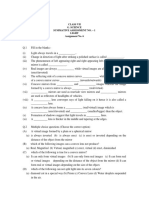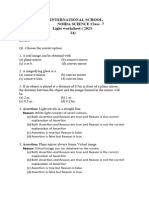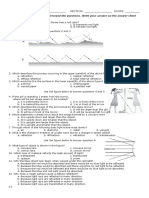0% found this document useful (0 votes)
18 views2 pagesCh-11 Light Practice Worksheet
This practice worksheet for Class VII Science focuses on the topic of light, including fill-in-the-blank questions, definitions, and problem-solving questions related to mirrors and lenses. Key concepts covered include the behavior of light, types of mirrors, and the characteristics of images formed by mirrors. Students are encouraged to explore practical applications of light in everyday scenarios.
Uploaded by
chaudhary.navya674Copyright
© © All Rights Reserved
We take content rights seriously. If you suspect this is your content, claim it here.
Available Formats
Download as PDF, TXT or read online on Scribd
0% found this document useful (0 votes)
18 views2 pagesCh-11 Light Practice Worksheet
This practice worksheet for Class VII Science focuses on the topic of light, including fill-in-the-blank questions, definitions, and problem-solving questions related to mirrors and lenses. Key concepts covered include the behavior of light, types of mirrors, and the characteristics of images formed by mirrors. Students are encouraged to explore practical applications of light in everyday scenarios.
Uploaded by
chaudhary.navya674Copyright
© © All Rights Reserved
We take content rights seriously. If you suspect this is your content, claim it here.
Available Formats
Download as PDF, TXT or read online on Scribd
/ 2























































